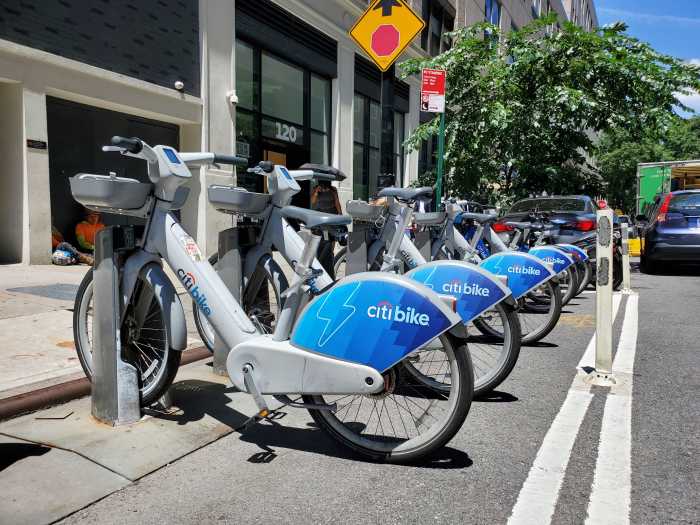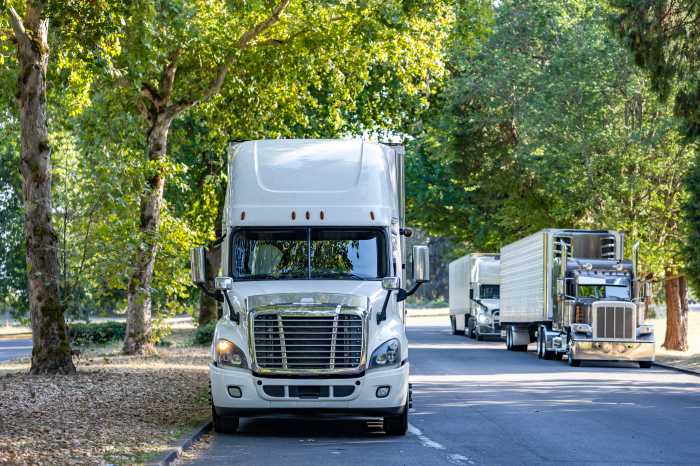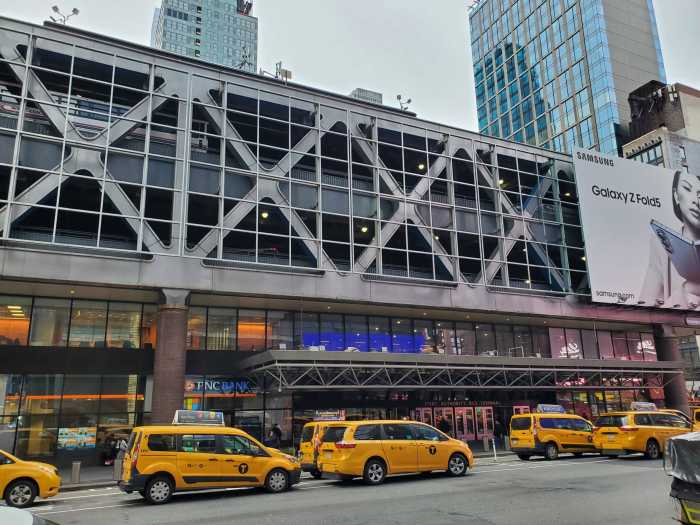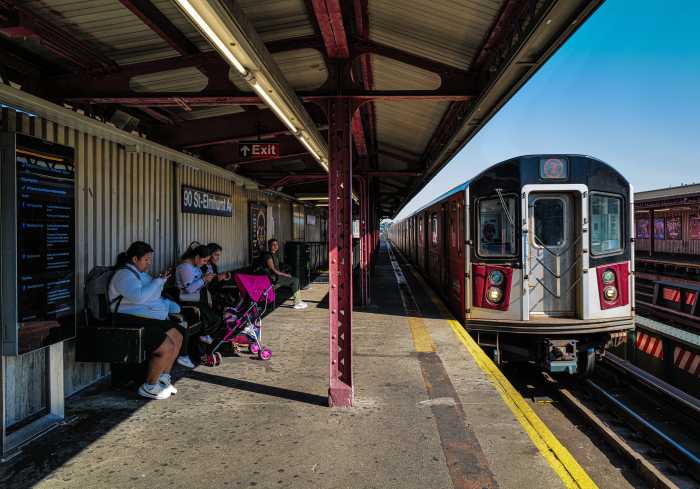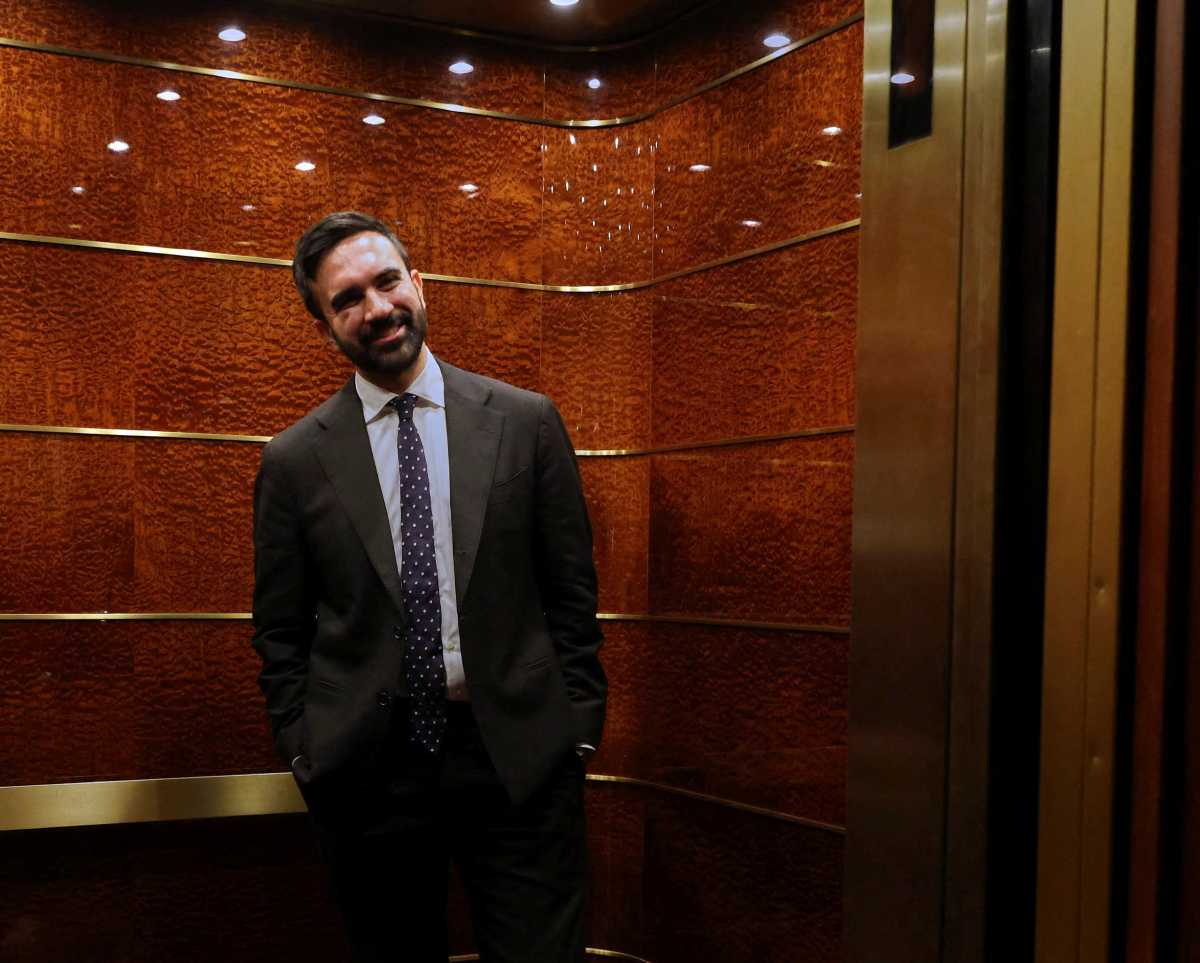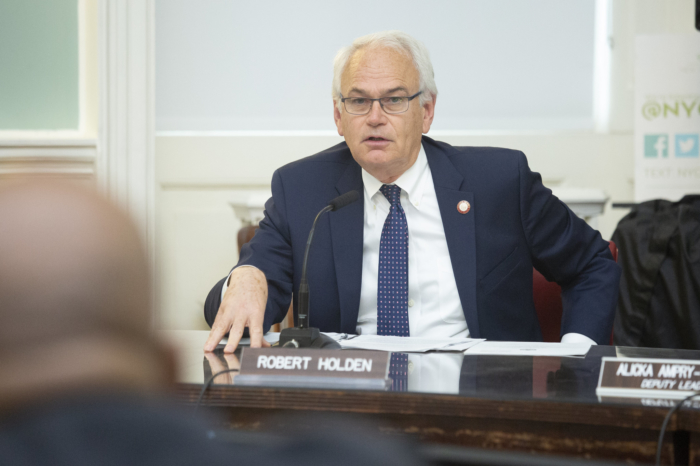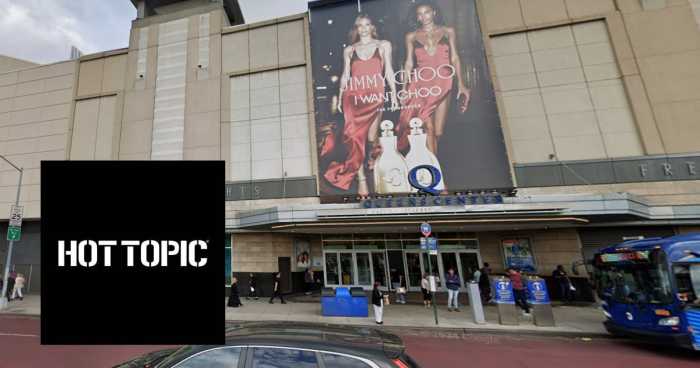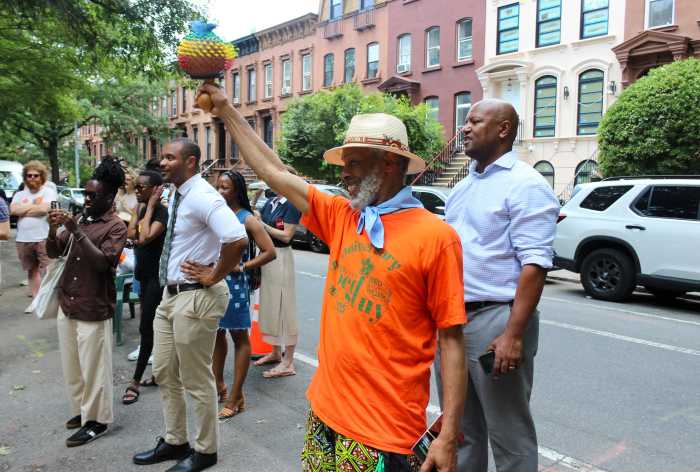
Roughly a month after Gov. Andrew Cuomo canceled the L train shutdown, there is still no sign of how the city will respond.
In preparation for the full closure of L service through Manhattan, the de Blasio administration had planned a host of street changes — new bike lanes, an exclusive busway, added pedestrian space. Now, with the L train shutdown likely canceled, the few projects that have been completed or are under development have divided business owners, residents and advocates.
Much of the focus has been on Manhattan’s 12th and 13th Streets, where the city has already striped protected bike lanes in anticipation of a rise in cycling during the shutdown. As Hyden Dyer, 30, undocked a Citi Bike on 13th Street recently, he used an idiom from home — Australia — to compare biking in protected lanes with riding in traffic.
“It’s like chalk and cheese,” said Dyer, who now lives near the street improvements in the West Village. “You’ve always got to look for cars, but having that dedicated space makes you feel so much safer.”
Emilio Enriquez, 19, a Chelsea resident who works across town, also wanted to keep the changes on the two streets, which offer him a clear shot from his home to his job. While many of the city’s avenues are striped with protected bike lanes, the 12th and 13th Street lanes represent some of the few crosstown lanes that are physically separated from traffic
“I can take this lane and get right home,” Enriquez said. “They should stay, absolutely.”
Some of his neighbors strongly disagree and are angered that the lanes replaced parking on one side of each street. Homemade signs were taped along roughly every half block of the 12th Street bike lane in the days following Cuomo’s announcement falsely claiming that the lanes were “canceled,” according to Jonathan Warner, who bikes through the area on his way to work.
“West Village parking only,” the sign continued in all caps. “Bike lanes only benefit other people.”
Warner also noticed glass strewed along several blocks of both the 12th and 13th Street lanes. A criminal complaint was filed.
“It comes as no surprise that Cuomo’s announcement has resulted in an immediate campaign to get everything rolled back, even if they had health and safety benefits outside of mitigating for the L train shutdown,” said Warner, a supporter of the bike lanes.
The 14th Street Coalition, a group of block associations along the corridor, have been leading the charge against the street changes, calling for the two bike lanes, as well as changes on 14th Street that eliminated parking to accommodate better bus service, to be torn up.
“We’re really against the idea of the busway on 14th Street, a major crosstown street,” said Judy Pesin, of the 14th Street Coalition. “That would divert crosstown traffic onto all the side streets in the Village up through Chelsea and the Flatiron.”
The coalition has a few local businesses along 14th Street in its corner. Ray Gurrai, the manager of Crossroads Wine & Spirits, said that the deliveries he receives three times a week have become much more complicated without a place to park on the block.
“We need parking or else it’s going to hurt our business,” Gurrai said. “We have customers that want to park outside our business, in front of our business.”
Mark Mikhailov, the owner of Chelsea Bagel and Cafe on 14th Street, said that even though most of his customers are neighborhood locals, the parking was valuable to his business because it reduced traffic among people looking to park.
“No one can stop. This is the problem,” Mikhailov said. “Traffic is more now than before because they’re looking for parking and there are fewer traffic lanes. It’s all ‘no-standing anytime’ now.”
Joe Cutrufo, a spokesman for advocacy group Transportation Alternatives, which has strongly pushed to keep the busway as well as any bike lanes, argued that the city shouldn’t heavily weigh car access in its decision-making for one of the most transit-rich areas of the country.
“In areas around Union Square, I don’t think there are many people driving to get to local businesses. This is the densest big city in America; it’s a walking city, transit city, biking city,” he said. “We don’t need to be bending over backward to create parking spaces — especially in a city where the average business is only as wide as one car.”
On Grand Street in Brooklyn, the city has planned for and partially installed a new protected bike lane and additional room for bus access as part of the L preparations. The changes have been less contentious, but still face some opposition.
Businesses there have similar concerns about the loss of parking and what that means for deliveries, according to Erin Piscopink, the executive director of the Grand Street BID. There was some agreement at a recent Brooklyn Community Board 1 meeting that the bike lanes at least could stay, with tweaks.
“Broadly speaking a lot of the concerns are around safety for pedestrians, cyclists, deliveries, vehicle traffic,” Piscopink said at the meeting. “There’s a ton of congestion on Grand Street now — Grand Street was congested before this and has gotten substantially worse since this.”
“If some of these changes like the curbside bike lanes are to stay in place, it seems like this should be considered through a more traditional public process,” she added.
Even without an L train shutdown as advertised, the MTA’s new plan to rehabilitate the tunnel will still make for extremely challenging off-hour commutes. The authority plans to undergo the work during nights and weekends, during which there will be 20-minute waits for trains — up from the roughly four-minute weekend waits now.
The city has not made any decisions regarding its related projects, which also included plans for HOV+3 restrictions on the Williamsburg Bridge to accommodate several planned shuttle bus routes between Manhattan and Brooklyn. A spokesman for Mayor Bill de Blasio referred to comments de Blasio made last week on WNYC, when he said the city was still trying to “figure out” how many if its plans are still necessary.
Some local officials have come out in support of the bike lanes, including Brooklyn Councilman Antonio Reynoso. While he wants to preserve the new space for bikes on Grand Street, he said the bus priority might no longer be necessary depending on what plans the city and MTA decide to scrap.
“Everything on Grand from Bushwick [Avenue] all the way to the Williamsburg Bridge I think is extremely appropriate and the safest street design,” Reynoso said.
City Council Speaker Corey Johnson, who represents District 3 — one of the Manhattan districts through which the Manhattan bike lanes and busway would run — wants the city and MTA to go back to discuss the changes with the neighborhood.
“These specific bike lanes and bus service changes were a result of the original L train shutdown plan and we were promised that there would be a collaborative community process to determine which elements should be made permanent,” Johnson said in a statement, “so that should be the next step.”
Cutrufo said a busway could show the city how to deal with the “traffic sewers” that are its Manhattan streets, and stressed that L service would be poor enough to warrant keeping the busway and bolstered bike access.
“One tunnel alone won’t be enough to serve all the people who ride the L,” he said. “I think we’re looking at a mini L-pocalypse every weekend.”



